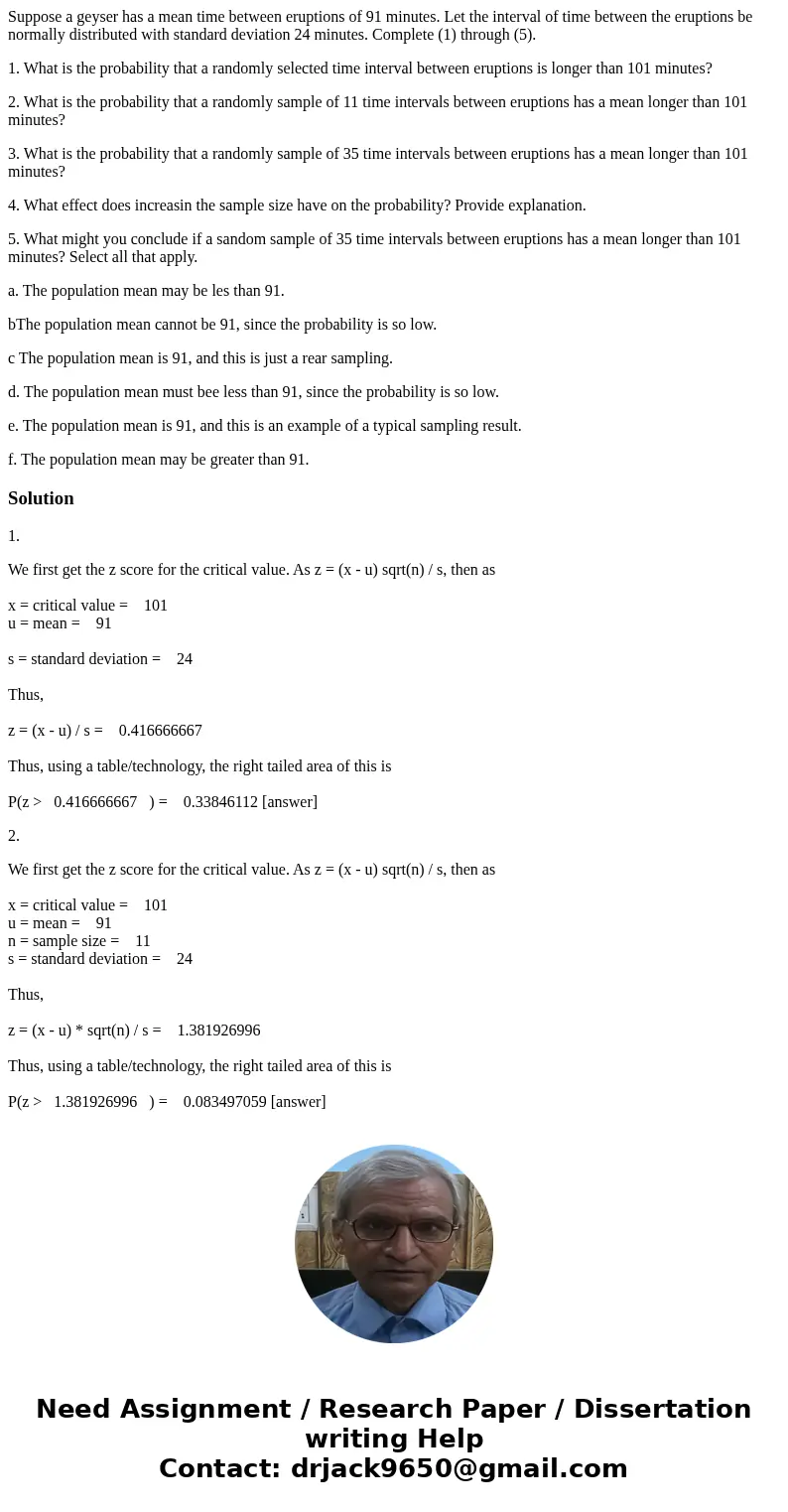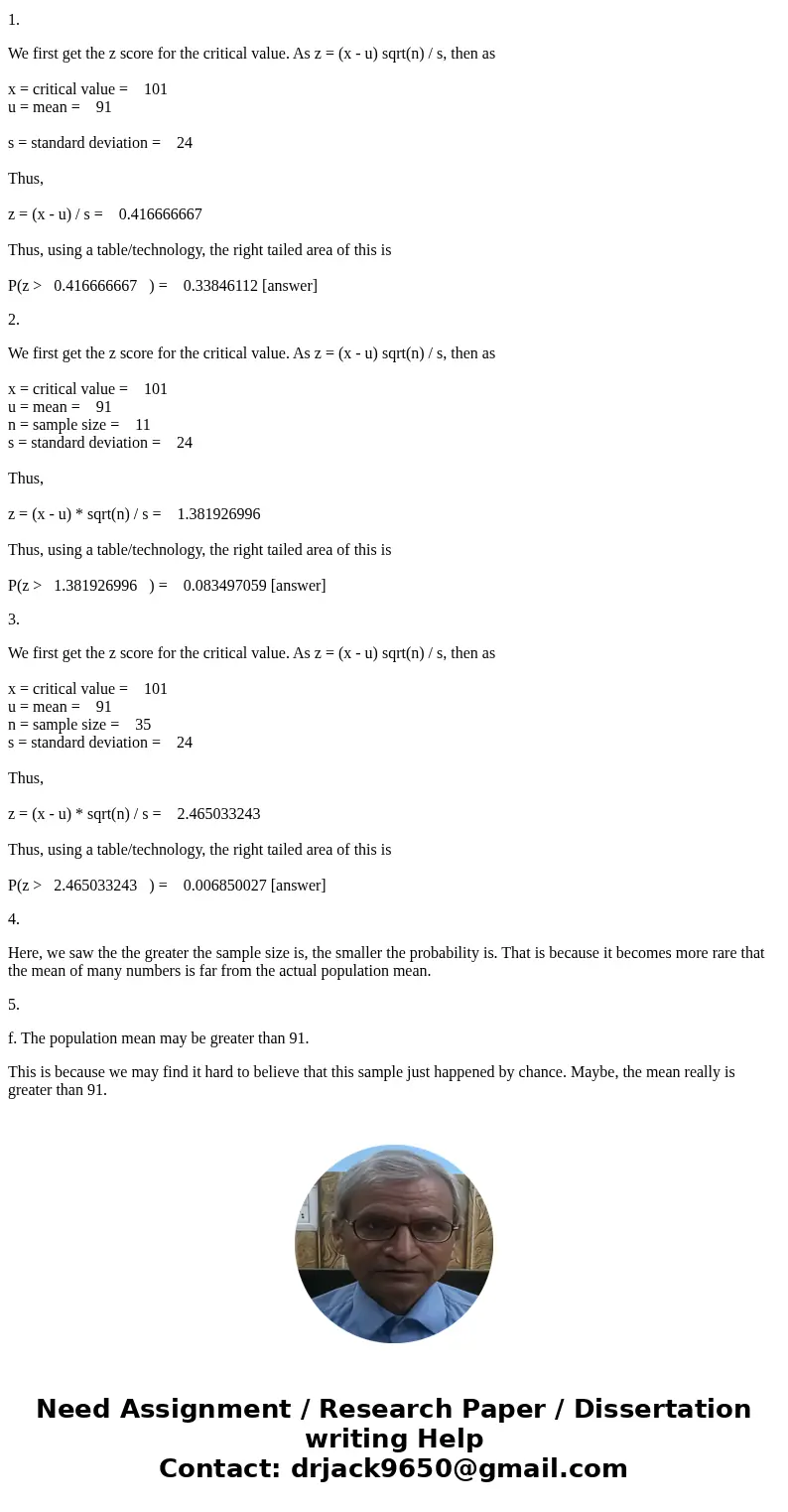Suppose a geyser has a mean time between eruptions of 91 min
Suppose a geyser has a mean time between eruptions of 91 minutes. Let the interval of time between the eruptions be normally distributed with standard deviation 24 minutes. Complete (1) through (5).
1. What is the probability that a randomly selected time interval between eruptions is longer than 101 minutes?
2. What is the probability that a randomly sample of 11 time intervals between eruptions has a mean longer than 101 minutes?
3. What is the probability that a randomly sample of 35 time intervals between eruptions has a mean longer than 101 minutes?
4. What effect does increasin the sample size have on the probability? Provide explanation.
5. What might you conclude if a sandom sample of 35 time intervals between eruptions has a mean longer than 101 minutes? Select all that apply.
a. The population mean may be les than 91.
bThe population mean cannot be 91, since the probability is so low.
c The population mean is 91, and this is just a rear sampling.
d. The population mean must bee less than 91, since the probability is so low.
e. The population mean is 91, and this is an example of a typical sampling result.
f. The population mean may be greater than 91.
Solution
1.
We first get the z score for the critical value. As z = (x - u) sqrt(n) / s, then as
x = critical value = 101
u = mean = 91
s = standard deviation = 24
Thus,
z = (x - u) / s = 0.416666667
Thus, using a table/technology, the right tailed area of this is
P(z > 0.416666667 ) = 0.33846112 [answer]
2.
We first get the z score for the critical value. As z = (x - u) sqrt(n) / s, then as
x = critical value = 101
u = mean = 91
n = sample size = 11
s = standard deviation = 24
Thus,
z = (x - u) * sqrt(n) / s = 1.381926996
Thus, using a table/technology, the right tailed area of this is
P(z > 1.381926996 ) = 0.083497059 [answer]
3.
We first get the z score for the critical value. As z = (x - u) sqrt(n) / s, then as
x = critical value = 101
u = mean = 91
n = sample size = 35
s = standard deviation = 24
Thus,
z = (x - u) * sqrt(n) / s = 2.465033243
Thus, using a table/technology, the right tailed area of this is
P(z > 2.465033243 ) = 0.006850027 [answer]
4.
Here, we saw the the greater the sample size is, the smaller the probability is. That is because it becomes more rare that the mean of many numbers is far from the actual population mean.
5.
f. The population mean may be greater than 91.
This is because we may find it hard to believe that this sample just happened by chance. Maybe, the mean really is greater than 91.


 Homework Sourse
Homework Sourse